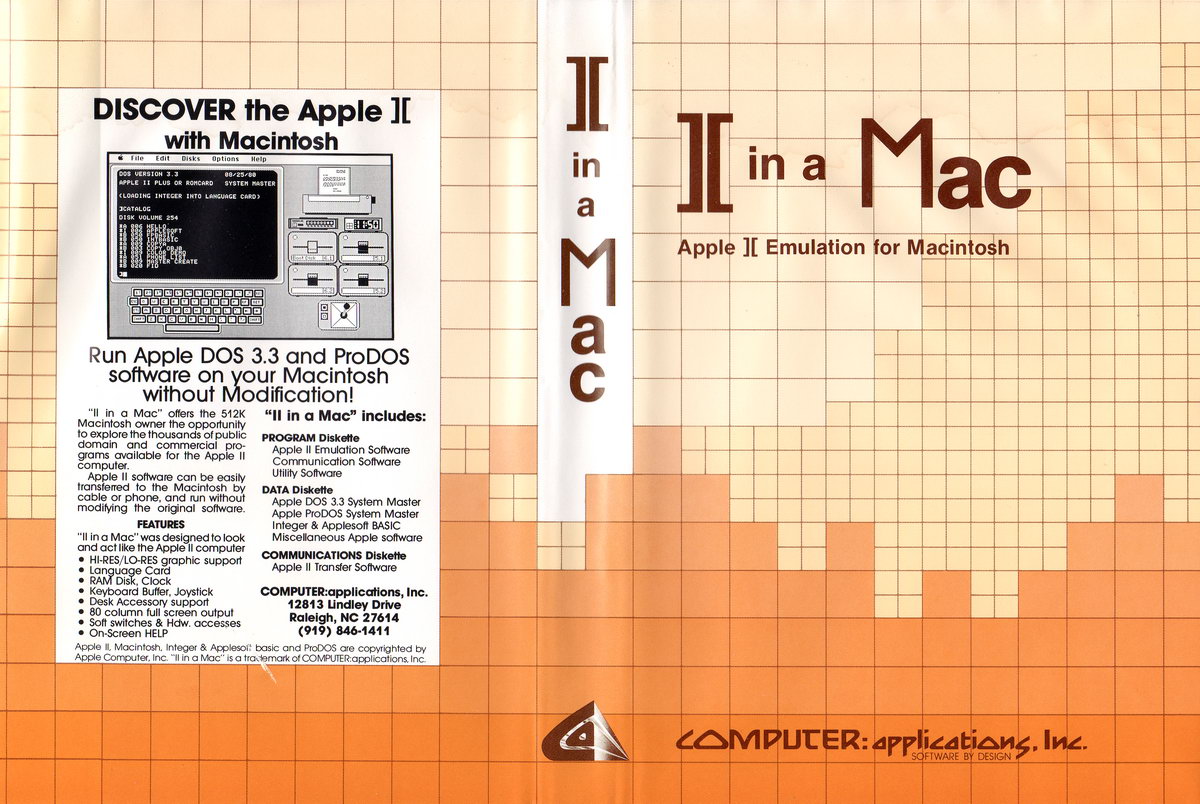

If you're a computing type, be sure and enjoy the ride as the technology keeps changing. And eventually they came in notebook types that could both be carried in one hand and used on a public park bench. I watched the computing world change from mainframe building size computers to desktop units that could be carried under one arm. Teachers were worried they might break it, kids charged ahead and learned and experimented with the new toy/tool. But as a computer guy I wanted the kids, including my own, to be exposed to computers. It was a bit difficult dropping off my computer in the morning and retrieving it in the afternoon after school. I included some of the games, typically arcade types. Later I loaned my computer to a local private school for the elementary kids to learn about computers. I was a mainframe computer programmer so I went on to write a compiled floating point basic computer game called Hegira.
#Apple ii mac emulator plus
I purchased my Apple II plus in (I think) 1979. Overall: 10.2 cm x 38.1 cm x 43.2 cm 4 in x 15 in x 17 in ID NumberĮducation See more items in Medicine and Science: Computers Work Computers & Business Machines Family & Social Life Data Source

United States: California, Cupertino Physical Description By 1984, when the Macintosh appeared, over 2 million Apple II computers had been sold. The Apple II went through several improvements and upgrades. This "killer application" was extremely popular and fostered extensive sales of the Apple II.
#Apple ii mac emulator software
In 1979 Software Arts introduced the first computer spreadsheet, Visicalc for the Apple II. The boards included floppy disk controllers, SCSI cards, video cards, and CP/M or PASCAL emulator cards. These allowed hobbyists to add additional cards made by Apple and many other vendors who quickly sprung up. Among the Apple II's most important features were its 8 expansion slots on the motherboard. External storage was originally on cassette tape, but later Apple introduced an external floppy disk drive. It included a BASIC interpreter and could support graphics and a color monitor. It came with 4 KB RAM, but could be extended up to 48 KB RAM. The Apple II used a MOS 6502 chip for its central processing unit. The Apple II started the boom in personal computer sales in the late 1970s, and pushed Apple into the lead among personal computer makers. Wozniak and Jobs demonstrated a prototype in December, and then introduced it to the public in April 1977. By August of that year, Wozniak started designing an improved version, the Apple II.

In 1976, computer pioneers Steve Wozniak and Steve Jobs began selling their Apple I computer in kit form to computer stores.


 0 kommentar(er)
0 kommentar(er)
